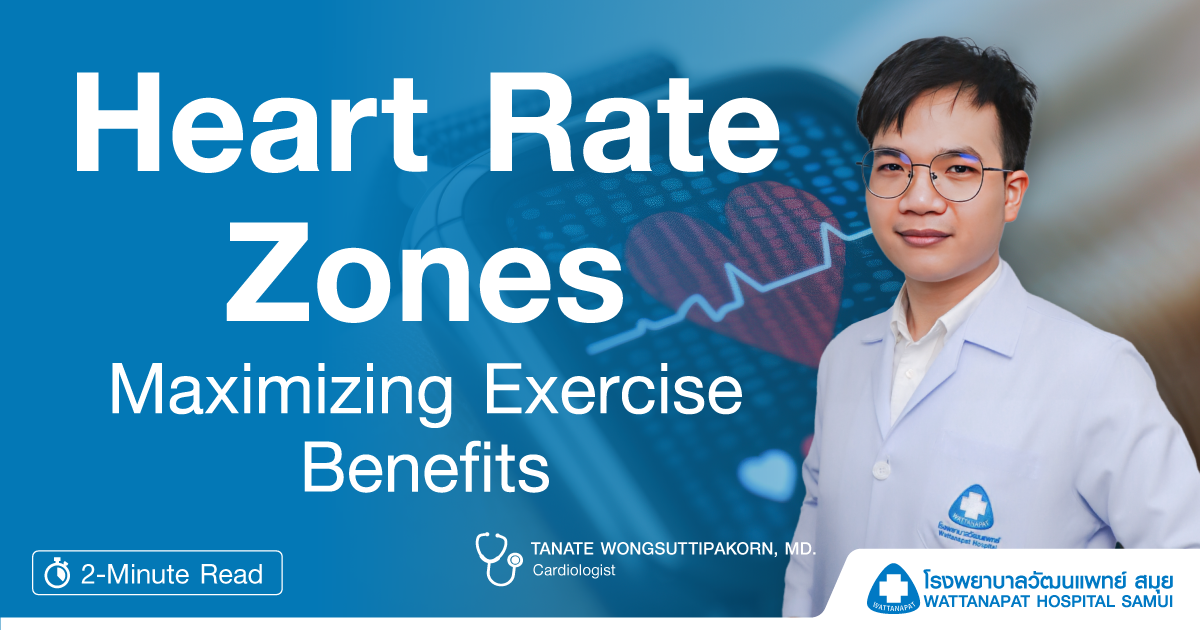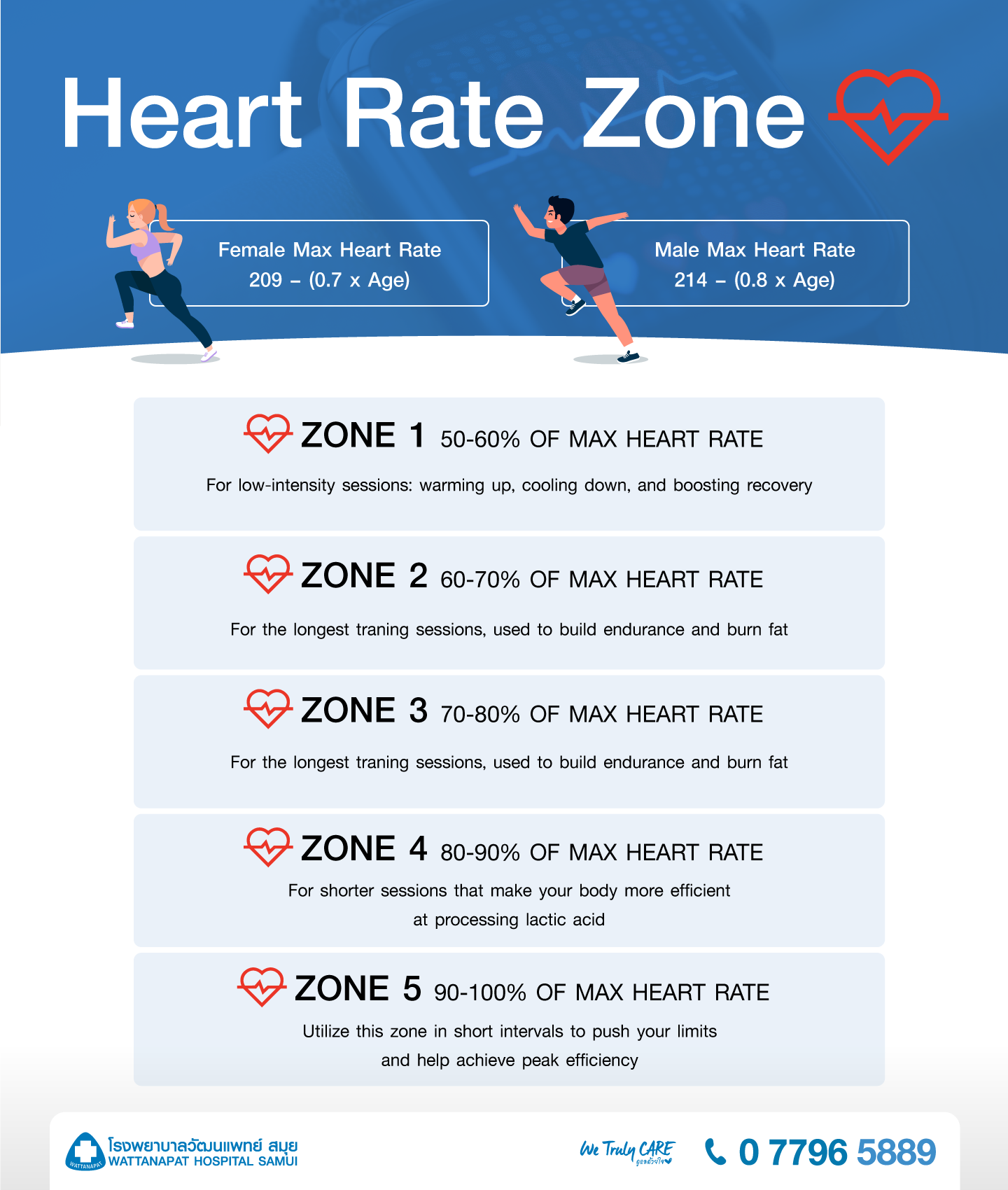Understanding heart rate zones
Heart Rate Zones: Maximizing Exercise Benefits

Heart rate zones help you achieve your fitness goals more effectively than simply working out and sweating each day. Understanding your maximum heart rate (MaxHR) is key, as it varies based on age and gender.
- For Men: MaxHR = 214 – (0.8 x Age)
For Women: MaxHR = 209 – (0.7 x Age)
Alternatively, a simple calculation is 220 - Age. For example, if you are 30 years old, your MaxHR would be 190 BPM. You can then determine your heart rate for each zone by calculating the percentage of your MaxHR, such as Zone 1 (50–60% of MaxHR): 190 × 50 / 100 = 95 BPM.
Why Heart Rate Zones Matter in Exercise
Your heart rate indicates your level of exertion during exercise and helps define the intensity needed to meet your fitness goals. Knowing your heart rate zones can strengthen your heart and burn excess fat more effectively.
Zone 1: Basic
Heart rate at 50–60% of MaxHR, sustained for 20–40 minutes. Light exercises such as jogging, brisk walking, cycling, or treadmill walking increase blood circulation. However, Zone 1 may not be sufficient for significant fat loss.
Zone 2: Endurance Training
Heart rate at 60–70% of MaxHR, sustained for 20–40 minutes. This zone effectively burns fat, making you feel more exerted as your heart pumps more blood to your muscles. Regular exercise in Zone 2 may lead to increased endurance, preparing you for challenges like mini-marathons or weight training.
Zone 3: Aerobic Exercise
Heart rate at 70–80% of MaxHR, sustained for 10–40 minutes. This zone strengthens muscles and increases overall endurance, making it suitable for those aiming for general health. To push further, such as completing a 10-kilometer mini-marathon in under 60 minutes, you’ll need to move to Zone 4.
Zone 4: Tempo Exercise
Heart rate at 80–90% of MaxHR, sustained for 2–10 minutes. In this zone, you can only speak minimally as your heart and muscles work harder than usual.
Zone 5: Sprint
Heart rate at 90–100% of MaxHR, typically used by professional athletes or those seeking extreme speed, such as in 100–400 meter sprints. However, if you're not in top condition, exercising in Zone 5 could lead to dizziness, fainting, high blood pressure, or even heart issues.

Heart Rate Zones in Practice
Exercising in Zones 1–2 may not burn a lot of fat, but it leaves you feeling refreshed, improving your mood and sleep quality. For general fitness or weight loss, Zones 3–4 are sufficient. These aerobic exercises, performed 3–5 days a week, strengthen the body, promote weight loss, build muscle, and improve blood flow to the brain.
Those aiming to reach Zone 5 should do so under close supervision by a doctor or coach. It is ideal for professional athletes or regular exercisers. Understanding heart rate zones allows you to choose the right level for your exercise goals, ensuring maximum benefits and helping you reach your desired fitness level.


